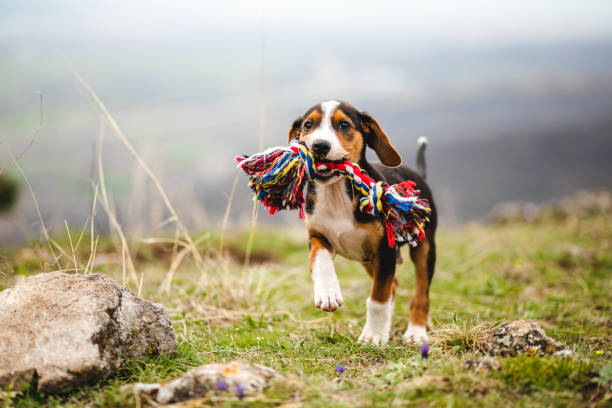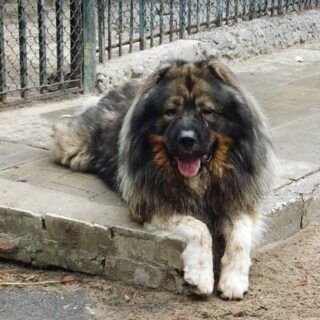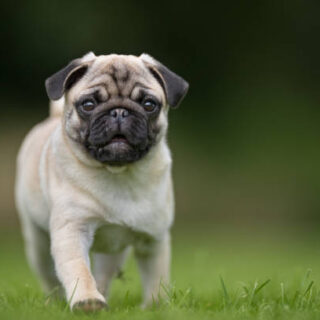Your cart is currently empty!

Single Product
Beagle Dog Breed
Beagle Dog Breed Beagle dog breeds are of English origin and were primarily bred to hunt hares and rabbits. These dogs are also called scent hounds, meaning they are known for their heightened sense of smell. They possess superior tracking skills, making them great hunters. Beagles are medium breed dogs and are extremely intelligent canines.…
Description
Beagle Dog Breed
Beagle dog breeds are of English origin and were primarily bred to hunt hares and rabbits. These dogs are also called scent hounds, meaning they are known for their heightened sense of smell. They possess superior tracking skills, making them great hunters.
Beagles are medium breed dogs and are extremely intelligent canines. They have floppy ears and big round eyes that will melt your heart with the typical puppy dog eyes. Though these dogs do not have thick fur on their coats, you still have to pay attention to their grooming as they shed a lot of fur.
Beagles have a playful temperament, enjoy the company of their owners and are fairly easy-going pets. They make for great companions because they do not experience any inherited health problems, making it easier for their owners to care for them. Beagles are high on energy and need an outlet for the same. This means you will have to squeeze in playtime in your schedule to make sure your Beagle exercises and stays fit. Plus, they adapt well to varying weather conditions.
Key Specifications of Beagle Dog Breed
-
Weight
– A healthy Beagle weighs between 10.011.3 kg.
-
Height
– It stands 13-15 inches tall.
-
Lifespan
– A Beagles average lifespan is 1215 years.
-
Coat
– Beagles have a short-haired coat that is soft to touch.
Behavioural traits of Beagles
Here are some of the unique characteristics displayed by Beagles –
- Beagles behave well with children, other dogs and even cats.
- They have a soft temperament and are playful in nature.
- They are high on energy and need more exercise.
- Beagles bark frequently as they are quite alert about their surroundings.
- They are highly intelligent and love having company rather than staying alone.
Physical appearance
– Beagles come in two weight categories – one wherein they weigh 9 kgs and less and the other wherein they weigh between 9 to 15.8 kgs. Beagles should not be underestimated because of their sizes. They are strong and are highly energetic. They have a smooth double coat without excessive fur on it. Beagles coats come in a wide range of colours such as –
- Black & Tan
- Black Red & White
- Black Tan & Bluetick
- Black Tan & Whitev
- Black White & Tan
- Brown & White
- Brown White & Tan
- Lemon & White
- Red & White
- Tan & White
- Blue Tan & White
Some Beagles also have markings on their coat, and Ticked would be the most common marking. Other unique markings would be-
- Spotted
- White Markings
- Tan Markings
- Brown Markings
- Black Markings
If you are someone who is a purebred enthusiast and wants to know how to identify a purebred Beagle, here are some indications of the same –
- A purebred Beagles tail tip will always be white in colour.
- All four paws of a purebred Beagle are also white.
- Their ears are fluffy and droop below their faces unlike a few other dog breeds.
- Their legs are also shorter than their bodies.
- They will also have white streaks on their heads, although a few mixed breed Beagles may also have white streaks on their heads.
Behaviour
-Beagles are long known for their fun nature and jolly temperament. They love playing and make entertaining companions for children and adults alike. Owning a Beagle means having a lot of fun time playing catch or frisbee with it. Because of their alert demeanour and keen perception, beagles tend to bark a lot. If not properly trained, they can come across as pestering animals due to their keen hunting instincts and tendency for barking. They enjoy company and do not like to be left alone for long durations. So, if your Beagle dog feels bored or lonely, it will yelp and bark for hours. Beagles heavily rely on their superior sense of smell and love activities that are exploratory in nature.
Care requirements for Beagles
Heres more information on Beagles that you should know if you are thinking of adopting one:
-
Health
– Beagles do not experience any hereditary health issues. But like all dog breeds, there are certain health concerns you should be aware of. Beagles are prone to developing a genetic disorder called Musladin-Lueke Syndrome. This disorder affects their connective tissue and organs, bones, muscles and skin. These dogs also can develop obesity because of their large appetite. Hence, you will have to keep tabs on the number of meals you feed them and their calorie-intake. Some of the other health disorders that Beagles are susceptible to are hypothyroidism, hip dysplasia, epilepsy and luxating patella.
-
Grooming
– Beagles do not have a heavily furred coat. It is short and adaptable to all kinds of weather. The only catch here is that they shed a lot of fur. So, you will have to brush it twice or thrice a week to make sure its fur remains clean and manageable. They shed considerably more heavily in the spring season due to their double coat, so you’ll have to brush them more frequently. Baths are not mandatory for Beagles unless they get muddy or dirty. Their nails should be trimmed regularly and must not be kept long. Beagles also need to get their ears cleaned every week. The reason is that their long, floppy ears prevent circulation of air inside the ears, making them prone to ear infections. You have to consult the vet to know the right way to clean your Beagles ears.
-
Exercise
– Beagles have a high need for exercise as they are always brimming with energy. They need to be walked for an hour every day whether it is at the park or around your neighbourhood. This will not only keep them physically fit but will also refresh them mentally. But make sure you tie your Beagle on a leash while taking it on a walk, or else its strong sense of smell might cause them to chase the source of it.
-
Nutrition
– Beagles are voracious eaters and eat anything they can get their paws on. For a balanced and nutritious food intake, it is advisable to feed your Beagle two meals a day, which should ideally include 3/4th cup of dry dog food. Like all other breeds, the amount of food you feed your Beagle depends on its life stage, activity level, size and age.
-
Training
– Beagles are smart, intelligent canines. But training them is not an easy task. Given the hunting nature of these dogs, they will prefer to explore things on their own rather than follow your commands. You will have to incorporate a lot of treats in your training sessions to make sure your Beagle learns to follow commands. You will also have to make the training sessions fun and interesting for them.
History of Beagles
Beagle dog breed was first bred in England in the 16th century as a hunting hound. They were trained to hunt rabbits, hares and other small animals. Wealthy Englishmen owned packs of hounds for hunting purposes as well. Gradually, Beagles made their way to North America, where they were domesticated and became one of the most popular dog breeds there. Modern day Beagles are believed to be a cross between European and British hounds. A popular reference of Beagles in cartoons is Snoopy. These dogs have also starred in popular films like John Wick, Cats & Dogs and Shiloh. This reflects how popular the breed was in 1950. In fact, the United States Department of Agriculture uses Beagles to sniff out and detect contraband food items in luggage.





